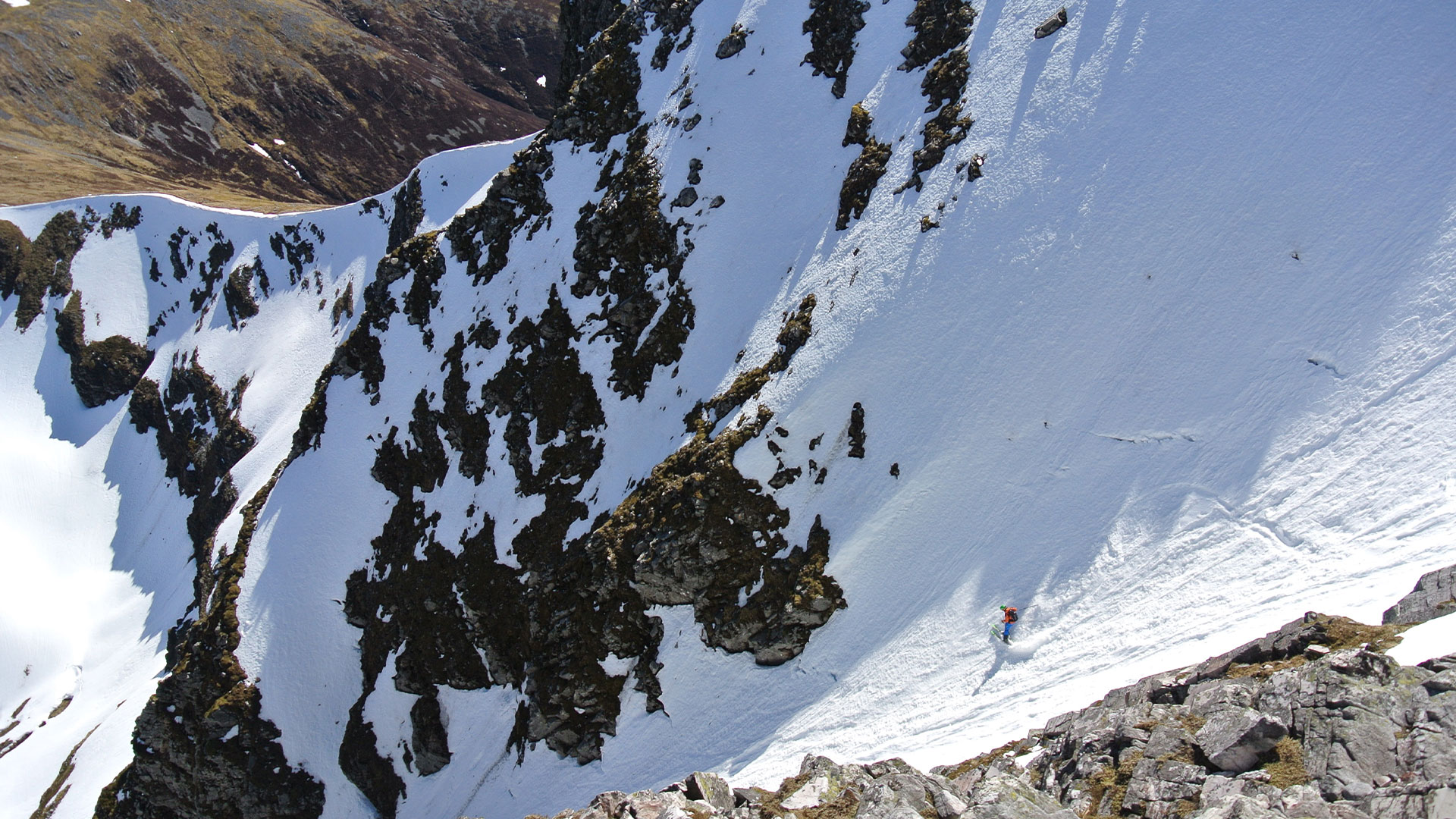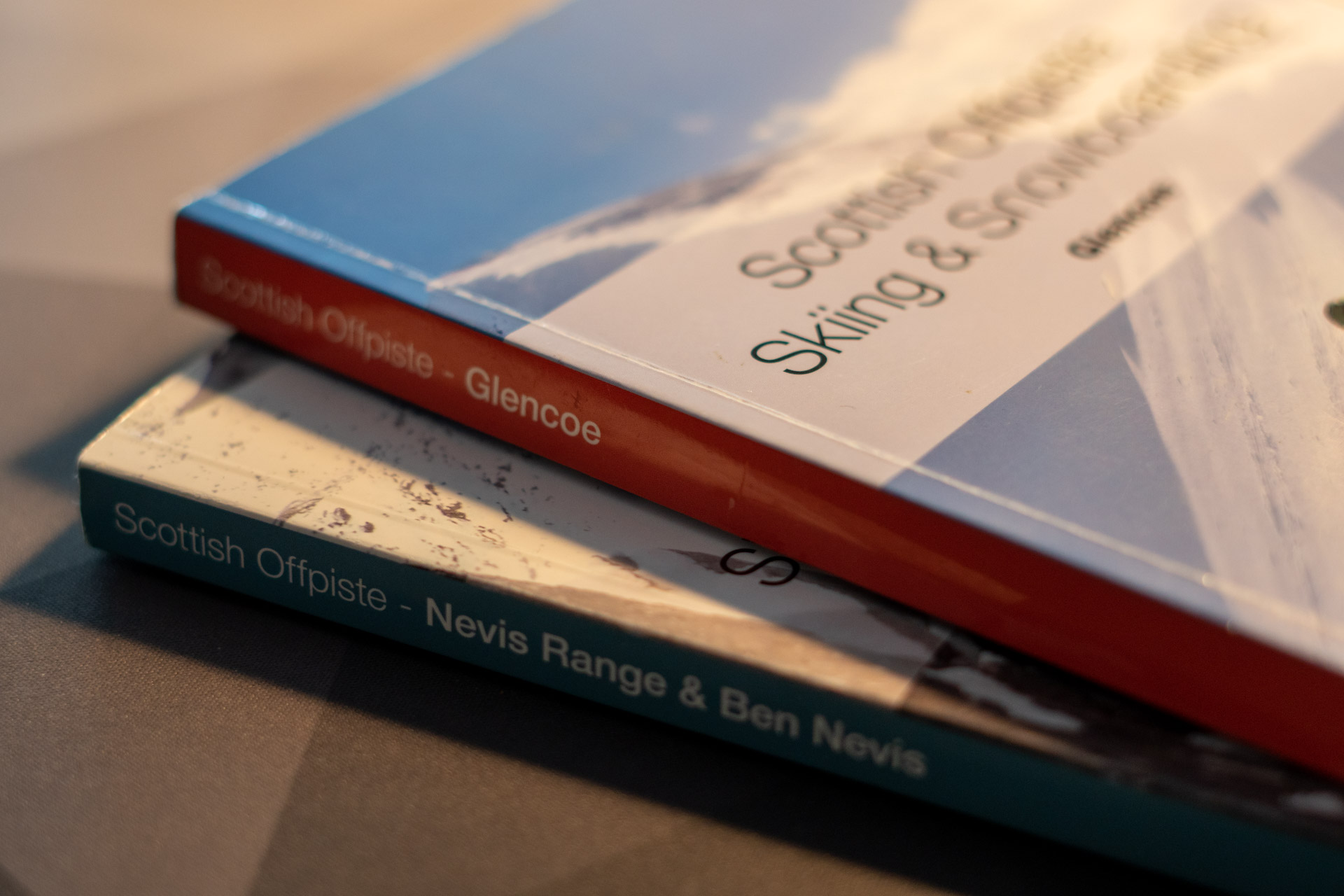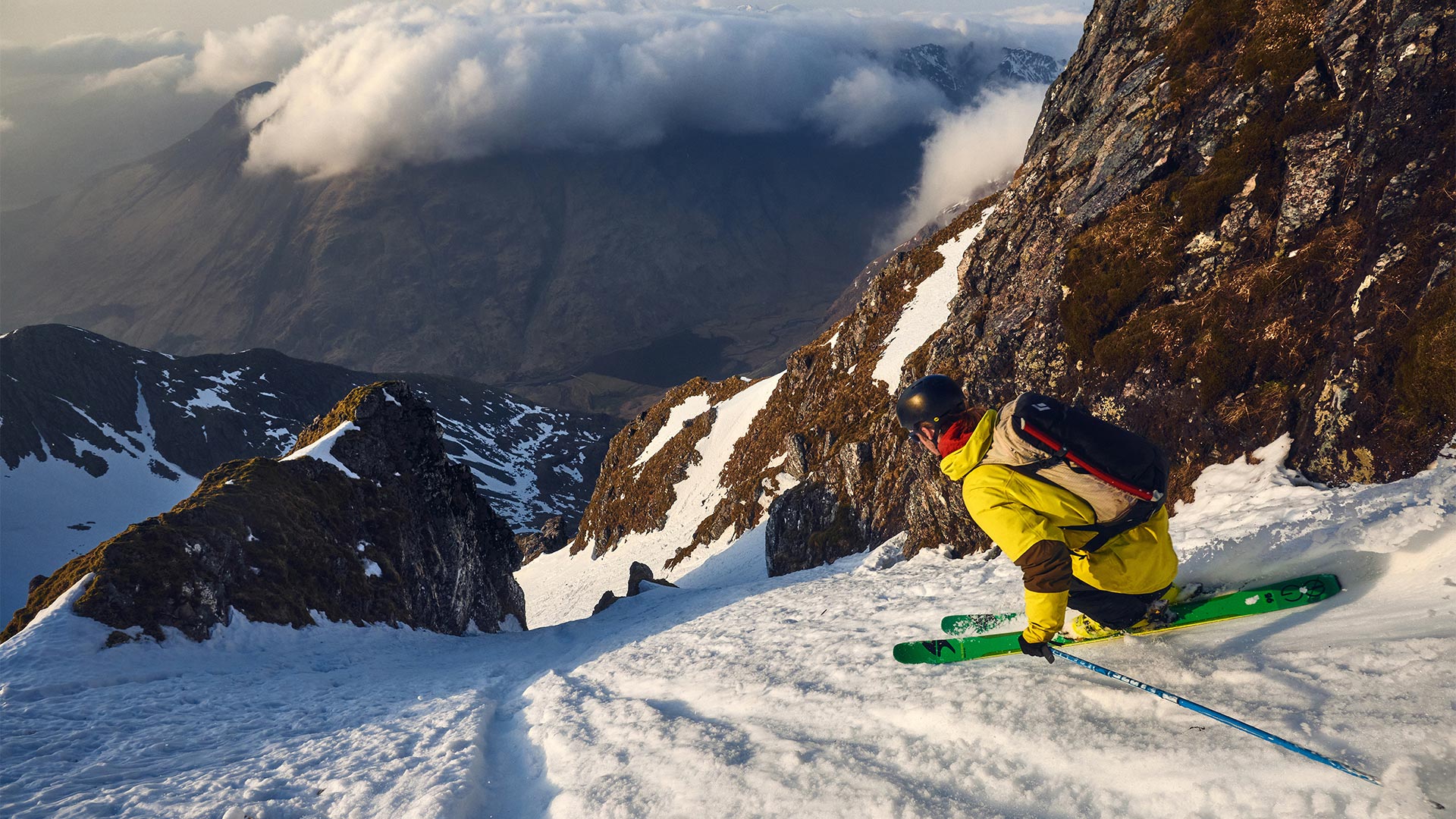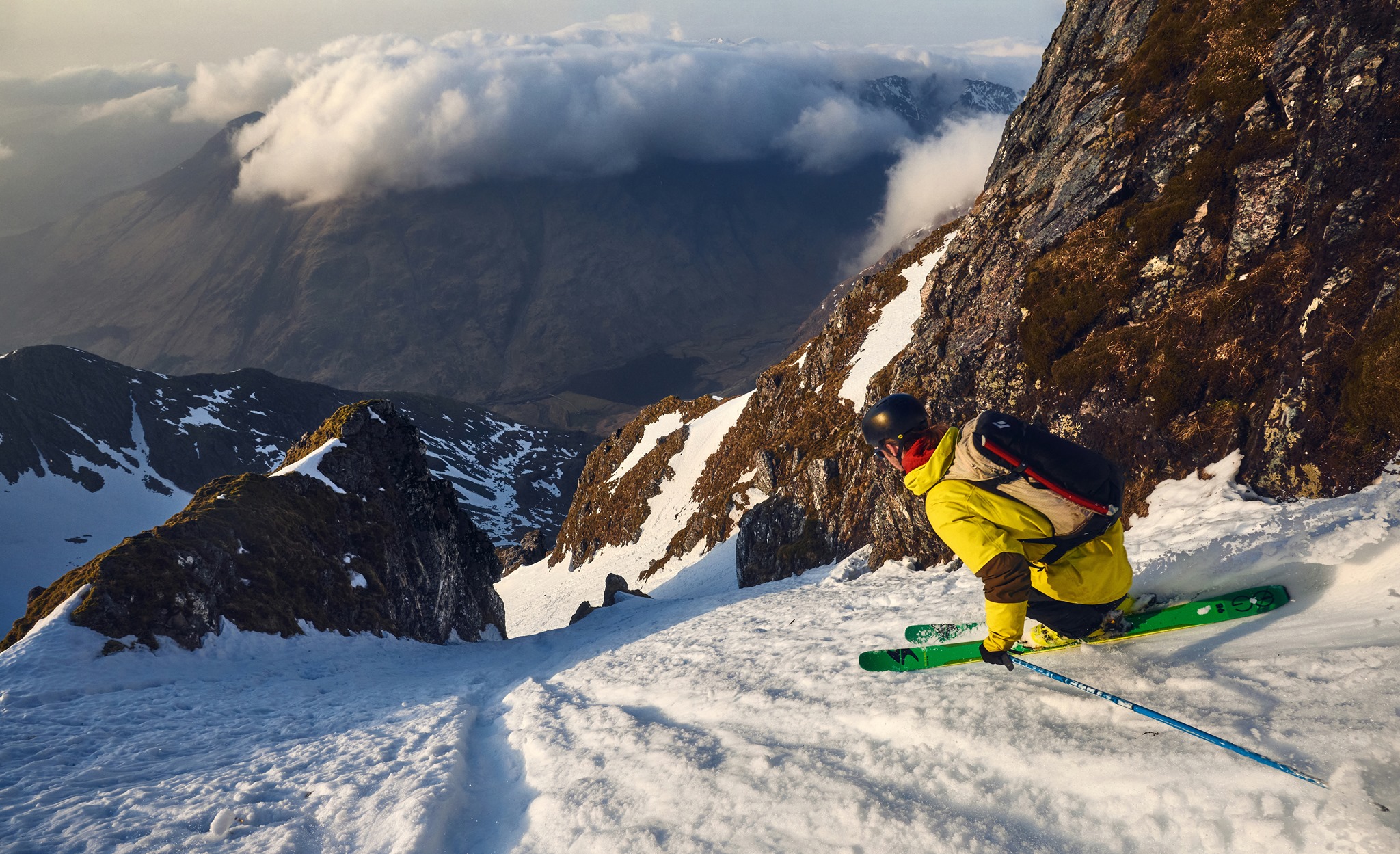When, in 1982, Chamonix mountain guide Jean Franck Charlet left the steep skiing capital of the world in the middle of winter, he wasn’t heading to the Greater Ranges for an unskied Himalayan line. No, he was heading to Scotland to sample some of the finest steep skiing in the world. On Ben Nevis.
Helped by the late, great Hamish MacInnes, Jean Franck had hoped to film the spectacle live for the BBC. While Jean Franck’s BBC documentary was a washout, the guide established a first descent down Good Friday Climb; a hair-raisingly steep climbing route that, quite literally, falls off the north face of Ben Nevis.
“There has been a huge boom in steep skiing in Scotland over the past 10 – 20 years”
Although Jean Franck’s feat remains unrepeated to this day, there has been a huge boom in steep skiing and ski touring in Scotland over the past 10 – 20 years. This is partly thanks to new developments in touring equipment, a few good snow years and the birth of what is probably one of the most vibrant and exciting ski scenes out there.
“But you can drive to the Alps in the same amount of time” and “Scotland’s too windy”. People are always quick to slam Scottish skiing, without ever having experienced what it really has to offer. And, to be fair, these people have probably booked their trip months in advance, taken one look at the questionable forecast, and written Scotland off. Their loss, I say. More ‘wind-packed powder’ for us.

With all this in mind, we’ve got our selection of five of the best steep descents in Scotland. Now, before all the gully skiing ultras jump into the comments section bashing me for only including five, I think it’s important to stress that this is a deliberately brief list. Just an appetizer to whet the appetite of the uninitiated, if you like.
“If you’re new to Scottish gully skiing, then do yourself a favour and grab yourself Kenny Biggin’s brilliant guidebooks”
If you’re new to Scottish gully skiing, then do yourself a favour and grab yourself Kenny Biggin’s brilliant guidebooks on the Nevis area and Glencoe (linked below). Kenny has gone to great lengths to provide accurate, detailed and inspiring route descriptions for (almost) every line worth doing in each region.

Get swotting up on wind patterns, snow and the extremely nuanced language that is Scottish conditions. Prepare for ‘wind packed powder’ to become the next champagne pow and surviving an icy scratchy gully to be a great “day oot!”







